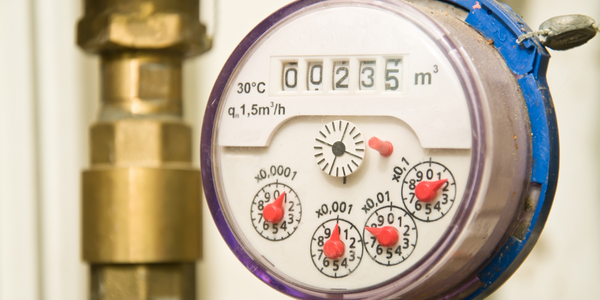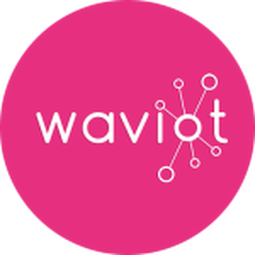
技术
- 分析与建模 - 大数据分析
- 网络与连接 - 网关
- 传感器 - 电表
适用行业
- 公用事业
适用功能
- 设施管理
用例
- 水务管理
客户
未公开
关于客户
公用事业管理公司
挑战
公用事业管理公司正在寻找一个单一的完整解决方案,使他们能够使用通用的单门解决方案同时管理所有服务。为此,决定为智能水表部署自动化资源管理系统,然后逐步将其扩展到燃气和供暖 AMI。公用事业管理公司在正确的消费统计和计费方面面临着几个严峻的挑战: - 客户手动提供的数据通常是不完整的。 - 公用事业代理商偶尔收集仪表读数,并且没有可用的证明检查。 - 居民没有准确会计的动力,这意味着他们没有正确跟踪消费。 - 没有明确的资源供应量和消耗量不平衡的原因。在某些情况下,它可以达到 30%,从而确保住宅管理公司的预算损失。 - 公用事业公司别无他法,只能手动处理仪表读数,每个月浪费几天时间来进行或多或少准确的核算。 - 未及时发现,例如漏水使这种情况恶化并给财产带来很多损失。
解决方案
WAVIoT 网络已部署在由当地公用事业管理公司运营的 36 栋公寓楼区域。本项目涉及的住宅公寓分布在140平方公里的土地上,城市环境不友好。作为参考,下图是其中一栋拥有 600 多套公寓的 22 层房屋。带有 3 × 120 度 16 dBi 扇形天线的 WAVIoT 网关已安装在附近建筑物的顶部,以实现卓越的范围和灵敏度。根据拓扑特征,为平均 100 万人口的城市提供全面覆盖所需的网关总数平均为 6-9 个单元。在第一阶段,超过 15 000 个 WAVIIoT 智能水表已安装在水立管位置。由于 WAVIoT 的 NB-Fi 信号的高穿透特性,绝对标准的现成设备可提供出色的通信链路预算。总结我们的用例经验,我们通常会看到我们的大多数节点在城市环境中展示 5-20 公里。如WAVIoT网管后台截图所示,最大距离超过25公里。网关安装在建筑物顶部,接收来自城市另一侧的 WAVIIoT 智能水表的信号,穿越恶劣的城市环境。如此长的传输距离有很多因素:基于窄带方法的 NB-Fi 协议的突出特性,非凡的 -154 dBm 网关灵敏度,配备 16 dBi 扇形天线,允许获得高达 176 dBm 的最大预算链路。
运营影响

Case Study missing?
Start adding your own!
Register with your work email and create a new case study profile for your business.
相关案例.

Case Study
IoT Solutions for Smart City | Internet of Things Case Study
There were several challenges faced: It is challenging to build an appliance that can withstand a wide range of voltage fluctuations from as low at 90v to as high as 320v. Since the device would be installed in remote locations, its resilience was of paramount importance. The device would have to deal with poor network coverage and have the ability to store and re-transmit data if networks were not available, which is often the case in rural India. The device could store up to 30 days of data.

Case Study
Automation of the Oguz-Gabala-Baku water pipeline, Azerbaijan
The Oguz-Gabala-Baku water pipeline project dates back to plans from the 1970’s. Baku’s growth was historically driven by the booming oil industry and required the import of drinking water from outside of the city. Before the construction of the pipeline, some 60 percent of the city’s households received water for only a few hours daily. After completion of the project, 75 percent of the two million Baku residents are now served around the clock with potable water, based on World Health Organization (WHO) standards. The 262-kilometer pipeline requires no pumping station, but uses the altitude differences between the Caucasian mountains and the capital to supply 432,000 m³/d to the Ceyranbatan water reservoir. To the people of Baku, the pipeline is “the most important project not only in 2010, but of the last 20 years.”

Case Study
GPRS Mobile Network for Smart Metering
Around the world, the electricity supply industry is turning to ‘smart’ meters to lower costs, reduce emissions and improve the management of customer supplies. Smart meters collect detailed consumption information and using this feedback consumers can better understand their energy usage which in turn enables them to modify their consumption to save money and help to cut carbon emissions. A smart meter can be defined in many ways, but generally includes an element of two-way communication between the household meter and the utility provider to efficiently collect detailed energy usage data. Some implementations include consumer feedback beyond the energy bill to include online web data, SMS text messages or an information display in consumers’ premises. Providing a cost-effective, reliable communications mechanism is one of the most challenging aspects of a smart meter implementation. In New Zealand, the utilities have embraced smart metering and designed cost effective ways for it to be implemented. The New Zealand government has encouraged such a move to smart metering by ensuring the energy legislation is consistent with the delivery of benefits to the consumer while allowing innovation in this area. On the ground, AMS is a leader in the deployment of smart metering and associated services. Several of New Zealand’s energy retailers were looking for smart metering services for their residential and small business customers which will eventually account for over 500,000 meters when the multi-year national deployment program is concluded. To respond to these requirements, AMS needed to put together a solution that included data communications between each meter and the central data collection point and the solution proposed by Vodafone satisfied that requirement.

Case Study
NB-IoT connected smart meters to improve gas metering in Shenzhen
Shenzhen Gas has a large fleet of existing gas meters, which are installed in a variety of hard to reach locations, such as indoors and underground, meaning that existing communications networks have struggled to maintain connectivity with all meters. The meter success rate is low, data transmissions are so far unstable and power consumption is too high. Against this background, Shenzhen Gas, China Telecom, Huawei, and Goldcard have jointly trialed NB-IoT gas meters to try and solve some of the challenges that the industry faces with today’s smart gas meters.

Case Study
OneWireless Enabled Performance Guarantee Test
Tata Power's power generation equipment OEMs (M/s BHEL) is required to provide all of the instrumentation and measurement devices for conducting performance guarantee and performance evaluation tests. M/s BHEL faced a number of specific challenges in conducting PG tests: employing high-accuracy digital communications for instrumentation, shortening setup and dismantling time, reducing hardware required, making portable instrument setup, avoiding temporary cabling work and the material waste costs

Case Study
British Gas Modernizes its Operations with Innovative Smart Metering Deployment
The UK government has mandated that smart meters are rolled out as standard across Great Britain by end of 2020, and this roll-out is estimated to create £14 billion in net benefits to the UK in consumer energy savings and lower energy generation demand, according to the Oxford Economics report, “The Value of Smart Metering to Great Britain.” While smart-metering systems have been deployed in many countries, the roll-out in Great Britain is unique because it is led by energy retailers, who have responsibility for the Electricity and Gas meters. The decision to have a retailer-led roll out was made by DECC (Department of Energy and Climate Change) to improve customer experience and drive consumer benefits. It has also led to some unique system-level requirements to support the unique local regulatory model.



